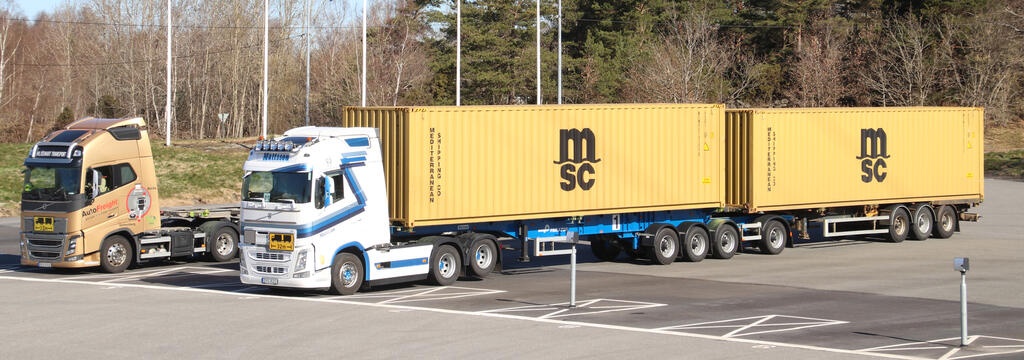Really long trucks will soon be driving on Sweden's roads
The government is now opening up for 34.5 meter long trucks to be able to drive on Swedish roads, which has been made possible thanks to solid work within CLOSER's network. Something that will bring great environmental and cost gains not only for the Swedish transport industry but also for Sweden as a whole.

The Swedish government has now submitted the proposal to the EU Commission and once the EU member states have approved it, the government can make a decision. When the decision has been made, which may be before the election this autumn, the Swedish Transport Agency and the Swedish Transport Administration have announced that they need one year to make the necessary adjustments in regulations and infrastructure.
— The message from the government was much awaited! This is what we and our cooperating hauliers have worked extensively with for ten years as we see great potential with longer vehicles. For us, longer vehicles mean a direct reduction in the number of crews in our long-distance traffic and reduced carbon dioxide emissions. Now the important work of ensuring as cohesive a road network as possible remains, which will be absolutely crucial for the possibility of implementing it.
Ida Jonsson, DB Schenker Consulting
According to the Swedish Transport Administration's calculations, allowing longer trucks can reduce energy consumption from heavy vehicles by 4-6 per cent, but up to 30 per cent on individual vehicles. This applies to all types of fuel such as electricity, biogas, hydrogen or diesel.
— We at Scania welcome the news that the government wants to open up for transports with longer vehicle combinations. This will lead to more sustainable, more efficient and competitive transport for the benefit of society, industry and all hauliers.
Ulf Ceder, Scania Group
— From Volvo's side, we are very positive that the Swedish government wants to allow longer trucks on the roads and notifies the EU about this. We have worked for a long time with experiments that pave the way for this development and will do everything to support the implementation
Lena Larsson, Volvo Group
The physical measures that need to be implemented are that signs need to be added to the traffic network, roundabouts and terminals need to be adapted. This applies to both state, municipal and private roads.
— This will lead to major environmental benefits for Sweden and cost savings for everything from hauliers and product owners to society at large. With the right use, we also see the possibility of getting more efficient multimodal solutions so that there is no risk of a transfer to the road, says Thomas Asp, project manager of the HCT program, CLOSER.
CLOSER has for ten years worked to look at the possibility of introducing both heavier and longer vehicles, on Swedish roads, in close collaboration with partners from both industry, academia and society. All knowledge collected has been presented to the Swedish Transport Administration, the Swedish Transport Agency and the government in a variety of formats, such as reports and presentations. It's everything from academic reports to tests in a real environment.
Do you want to know more?

